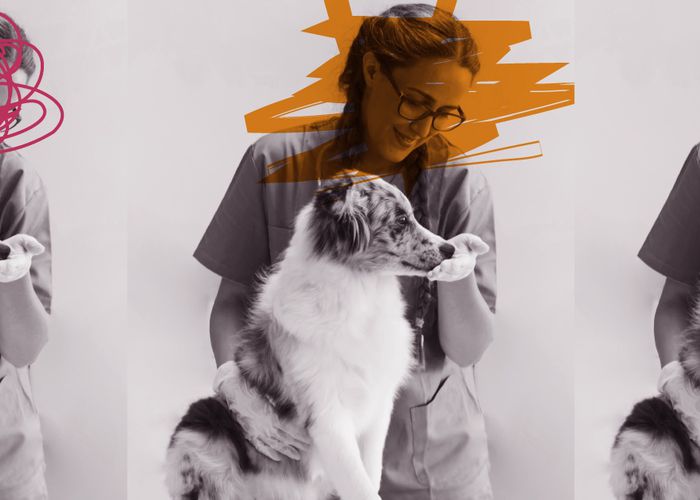

Why a Comprehensive CBC Should Be Included in All Wellness Visits
The complete blood count (CBC) test is simple to run and relatively inexpensive; it also provides "insider" information on multiple aspects of your patient's internal health. Veterinary students are taught to include the CBC in all screening panels, all the time. Yet, not everyone recommends it as part of every wellness visit.
Both the American Animal Hospital Association (AAHA) and the American Association of Feline Practitioners recommend that a CBC be part of the wellness screening protocol for adult and senior companion animals. Many veterinarians like to know the "why" behind position statements and consensus recommendations so that they can feel good about helping clients make care decisions.
Elevate patient care without overwhelming staff. Learn how.
Read on to find out why it's important to include a comprehensive CBC in all wellness visits — and how it can benefit your patients' quality and quantity of life through early detection.
Changes Can Catch Disease Before Clinical Signs
A CBC is a minimally invasive option for gathering information that helps you evaluate your patient's health status in more detail and with a wider scope. This standard test includes the erythrogram, leukogram, and thrombogram — providing valuable insight as to the quantity and quality of three groups of cells: red blood cells (RBCs), white blood cells, and platelets, respectively. Deviations from normal in any one of these groups can indicate that your patient is experiencing a hidden inflammatory or disease process that has not yet presented with clinical signs.
A highly useful and often overlooked component of the comprehensive test is the absolute reticulocyte count. You may often think of reticulocytes only when wanting to evaluate or classify an already existing anemia. However, one of the biggest benefits of an absolute reticulocyte count, when included in the CBC, is that it can help to detect harmful internal processes before patients are actually anemic. An increase in these immature RBCs in the absence of anemia will tell you that your patient is compensating for an underlying blood loss or hemolytic process that is not yet causing clinical signs. The earlier you can find and stop the bleed or cell destruction, likely the better off your patient will be.
The stress leukogram provides another good example of when the comprehensive CBC can detect corticosteroid "stress" effects in patients before they're showing obvious signs of illness. The classic presentation of a stress leukogram consists of increased mature neutrophils, decreased lymphocytes, and eosinophils, and normal to mildly increased monocytes. In the absence of steroid medication use, especially if the results are repeatable, this set of results can be interpreted as a "red flag," indicating that you should investigate further by asking more questions of the pet owner and possibly ordering additional diagnostics to rule out underlying or subclinical disease.
Patient Trends Support Earlier Detection
As a veterinarian, you already know that your patients are good at hiding their pain. And by the time pet owners start to notice clinical signs, treatment is more complicated or, in the worst-case scenarios, unlikely to help. By including a CBC as part of every preventive panel, you can start to accumulate data on the individual patient based on their hematologic trends.
Trends provide the opportunity to catch deviations from the individual patient's normal, which may show up prior to changes that are definitively outside of the clinical reference interval. For example, if a feline patient's hematocrit has been at 39-40% for multiple testing intervals and then shows up at 32%, there's a good chance there's an important reason for that. And you can look for that reason with further diagnostics or, at least, heighten awareness around the trend and recommend more frequent monitoring.
Earlier Detection to Improve Patient Outcomes
As the saying goes, "We don't know what we don't know." You can't offer treatment options to help your patients if you don't know they need the treatments. And your patients can't tell you they're feeling "just a little off." According to an article published in AAHA's NEWStat, 1 in 7 adult cats and dogs, and 1 in 5 senior cats and dogs, will have at least one clinically significant abnormality in a lab screening that includes both a CBC and a chemistry panel. When an abnormality is detected, combining the information in these screening tools gives veterinarians more power to move forward and act more effectively for their patient's benefit.
In an era where advanced and efficient diagnostics are becoming more and more accessible, the CBC is not only still relevant, but it's also one of the most sensitive tools for early detection of underlying or subclinical disease. The earlier you can find a deviation from health, the quicker you can act to figure out the next best step for your patient, giving you a better chance at helping them achieve the best possible outcome.







